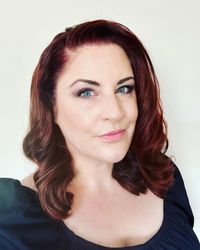

Having completed several cardio-based fitness challenges over the last month - including 100 burpees a day for a week and 100 jumping jacks for a day for a week - I felt it was time to slow things down with a move that requires a bit more precision. And what better way to do that than with the bird dog exercise?!
So-called because it mimics the position trained gun dogs adopt when they spot a bird to retrieve (think head up, and one paw off the floor), the bird dog is primarily a core exercise that provides a wide range of benefits outlined below.
Concentration, balance, and good coordination are essential if you want to perform the bird dog with good form and reap the benefits - as is a decent exercise mat to cushion your knees! It’s also a great move to add to your roster of core exercises because it works multiple areas of the body in one go to give you more bang for your buck. With that in mind, I grabbed my mat and got ready to do it doggy style.
How to perform bird dogs?
- Begin on all fours in the tabletop position, with your wrists placed directly under your shoulders and your knees in line with your hips.
- Engage your core and focus on maintaining a neutral spine, then draw your shoulder blades together.
- Keeping your gaze on the floor and chin tucked into your chest, raise your right arm and left leg off the floor, keeping your shoulders and hips parallel to the floor.
- Hold this position for a few seconds, then lower your arm and leg back down to the start position. This is one rep.
- Perform 10 reps, then repeat the move with the other arm or leg to complete one set. Aim to perform two to three sets in total. Alternatively, you can raise your right arm and leg, return to the starting position, then immediately switch to your opposing limbs and keep alternating for an extra challenge.
What are the benefits of doing 50 bird dogs a day?
Bird dogs might technically be a core exercise, but this multi-joint move also works the glutes and the erector spinae, which run along the full length of the spine, as well as the rectus abdominus, aka your six-pack muscles. But that’s not all, because the bird dog additionally works the trapezius muscles in your upper back, your deltoid muscles in your shoulders, and your hamstrings to target your back, hips and core in one hit.
Because the hardest part of the exercise involves maintaining your balance on just one hand and one knee while keeping your entire torso parallel to the floor, bird dogs help to challenge your overall stability, coordination, and mobility. They also place particular focus on your lower back and are therefore recommended as a great exercise to help reduce lower back pain over time while encouraging a neutral spine, better posture, an increased range of motion, and improved athletic ability.
To get the full benefits of the dog bird exercise, you need to focus on moving your body as a whole by raising your opposing limbs off the floor simultaneously rather than moving your muscles in isolation, i.e., raising your leg off the floor first, and then raising your arm (unless you are a beginner).
I did 50 bird dogs a day for a week, and this is what happened
Day 1
Get all the latest news, reviews, deals and buying guides on gorgeous tech, home and active products from the T3 experts
Having never done bird dogs before, my technique was far from great on the first day. If you’re one of those people who can pat their head and rub their tummy at the same time, then you’ll have a head start, but if you’re a little uncoordinated (like me), you’ll need to concentrate fully on the task at hand.
The challenge of raising two opposing limbs off the ground simultaneously was one thing, but maintaining good form throughout was another entirely. I found I was prone to violent wobbles if I neglected to keep my core braced and my back and hips flat at all times.
In short, slow and steady wins the race when you’re doing bird dogs and bashing your 50 reps out in quick succession won’t bring you any benefits – only the risk of faceplanting the floor.
Day 2
Still taking things slowly, I found I felt a little more coordinated, which meant I could better focus on my form. What didn’t help was the fact that my glutes and lower back felt very achy, and my knees were screaming in discomfort.
As with day one, I did 25 reps on each side, and I noticed that I kept gently leaning over to the side and slightly twisting my posture as I raised my opposite arm and leg. I also had trouble keeping my supporting leg directly underneath my hip. This was when I realised I needed to employ my core and upper body strength more, especially at the shoulders, to keep things stable.
Day 3
I was still wrestling with my form, which frustrated me greatly. Without a mirror to check the execution of my movements, I grabbed my phone to record myself in action and soon realised I was lifting my raised arm and leg a bit too high off the ground.
This probably also explained why my lower back was hurting because I was clearly putting too much pressure on it. With this in mind, I decreased my movements a bit and got someone to place a book on my back to ensure I maintained a flat back (which actually worked).

Day 4
My lower back didn’t feel as achy, and I felt much more confident performing the bird dog. So much so that I focused on really elongating my extended limbs as if I was trying to touch a wall with my fingertips and toes. As a result, I really started to feel the exercise in my glutes, which is always welcome.
I also felt much more stable and in control, and when you get to a similar point, I’d recommend you also start thinking about your breathing, exhaling as you extend your limbs, and inhaling as you return them to the start position. Doing this, I found the bird dogs became quite relaxing and almost meditative, even though I was working my body hard.
Days 5 & 6
On days five and six, I slowed things down even further by holding my extended arm and leg in the air for five seconds before slowly returning them to the ground. This challenged more core further and left some muscles trembling, but overall, I must say I felt really strong and finally in control of my body, which was a great feeling.
Day 7
I woke up feeling sore in my core, shoulders, glutes and thighs but having achieved so much in a week; I wanted to go out with a bang. Therefore, I dug out my old ankle and wrist weights, strapped them on, and got to work!
To up the ante further, I also stopped doing 25 reps on one side in a row and instead changed sides after every rep. Doing this really challenged my stability and balance, but I got through it by remaining focused on my breathing and form. As I’ve said before, concentration is key when doing the bird dog, especially if you want to get the maximum benefits which, for me, included reduced lower back pain and a strong sense of accomplishment!

Jo is a London-based freelance journalist and content creator specialising in fitness, health, lifestyle and beauty. With a degree in Journalism, Film & Broadcasting from Cardiff University and almost 20 years’ experience in the industry, she interviews celebrities and Olympians for a living, while testing out the latest beauty, hair, wellness and fitness gadgets. As a Level 3 Personal Trainer and author of several fitness guides, she gets to try the coolest workouts while reviewing active travel destinations and writing investigative features about the wonderful world of wellbeing for many of the UK’s top magazines, newspapers and digital publications. When she’s not sitting at her laptop, Jo likes exploring new walking spots with her beagle, gardening, and DIY. She is also one of the few people on the planet still obsessed with what’s coming up in Phase 5 of the Marvel Cinematic Universe.